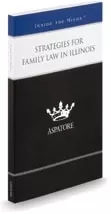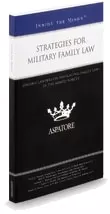To read more on this topic, you can also read another similar article by Kirk C. Stange titled: Family Limited Partnerships and Divorce.
a. Tax Consequences of the Division
Creating a Family Limited Partnership (FLP) yields tax benefits and non-tax benefits. As far as taxable benefits are concerned, there are two ways in which forming a FLP reduces the taxable value of the decedent’s gross income:[1] Gifting partnership interest to younger family members.[2] Accordingly, the donor’s gross estate is reduced by the amount of the gift.[3] Another method to reduce taxable value is through the application of valuation discounts to the taxable estate.[4]
Valuation discounts can happen two ways.[5] Lack of marketability is one factor that reduces value in a Family Limited Partnership.[6] “This is because buyers are wary of the potential problems stemming from the family dynamic inherent in a Family Limited Partnership”.[7] Another valuation trait can affect lack of marketability is the “restrictive transfer right” clause in the contract. This clause “restricts transferability of partnership and subsequently reduces the value of the donor’s partnership.”[8] This reduction in the donor’s partnership value can vary from 20 to 40 percent.[9]
Lack of control is another factor that reduces the “fair market value” of a Family Limited Partnership.[10] Consider the following, “a limited partner has no control over… managerial decisions… As a result, fair market value analysis, a non-controlling interest in an FLP is worth less than a controlling interest.”[11] The IRS permits around 20 to 40 percent discount for such situations.[12]
Over time, the IRS has made arguments regarding discount valuations as abusive, particularly when Family Limited Partnerships are established for nothing but tax shelters.[13] Sometimes the formation of an FLP is motivated by client’s desire to relieve the burden of the federal estate tax. Therefore, courts have started carefully reviewing the use of FLPs as an estate-planning device. In order to receive the tax benefit, the taxpayer forms an FLP with family members and contributes assets to the FLP. 78 In exchange for this contribution, the taxpayer receives a limited partnership interest in the FLP. At death, the taxpayer’s gross estate includes the value of the limited partnership interest instead of the value of the transferred assets. 79 A non-controlling interest in a FLP is little; for this reason, the estate will apply substantial valuation discounts to the taxable value of the FLP interests, thus reducing the amount of tax owed at the taxpayer’s death. 80 The IRS has been attempting to limit this abuse by including the entire value of the assets transferred to the FLP in the decedent’s gross estate under Internal Revenue Code § 2036(a). I.R.S. § 2036(a) includes all property transferred during the decedent’s lifetime in the decedent’s gross estate when the decedent failed to abdicate enjoyment of or control over the assets subsequent to the transfer.
As an example, in Estate of Abraham v. Comm’r, [14] a representative of estate petitioned for redetermination of estate tax deficiency arising from inclusion of full date of death value of three FLPs in estate. The trial court concluded that the value of transferred assets were includable in the gross estate given the testator retained use and enjoyment of property during her life. [15] The court said, “an asset transferred by a decedent while he was alive cannot be excluded from his gross estate, unless he absolutely, unequivocally, irrevocably, and without possible reservations, parts with all of his title and all of his possession and all of his enjoyment of transferred property.”[16] Through documentary evidence and testimony at trial, it is clear that, “she continued to enjoy the right to support and to maintenance from all the income that the FLPs generated.”[17]
Second, in Estate of Erickson v. Comm’r[18], the Estate petitioned for a review of the IRS’s determination of including in her gross estate and the entire value of assets that testatrix transferred to a FLP shortly before her death. The court determined that the decedent kept the right to possess or enjoy the assets she transferred to the partnerships, so the value of transferred assets must be included in her gross estate.[19] The court said that the “property is included in a decedent’s gross estate if the decedent retained, by express or implied agreement, possession, enjoyment, or the right to income.[20] A decedent maintains possession or enjoyment of transferred property where there is an express or implied understanding to that effect among the parties, even if the retained interest is not legally enforceable.[21] Even though, “no one factor is determinative … all facts and circumstances” must be taken together.[22] In this case, the facts and circumstances show, “an implied agreement existed among the parties that Mrs. Erickson retained the right to possess or enjoy the assets she transferred to the Partnership.”[23] The transaction illustrates “decedent’s daughter’s last minute efforts to reduce their mother’s estate tax liability while retaining for decedent that ability to use the assets if she needed them.”[24]
Additionally, in Strangi v. Comm’r[25], an estate petitioned the Tax Court for a redetermination of the deficiency. The Tax Court found that Strangi had retained an interest in the transferred assets such that they were properly included in the taxable estate under I.R.C. § 2036(a), and entered an order sustaining the deficiency.[26] The estate appealed. The appeals court affirmed the Tax Court’s decision. I.R.C. § 2036 provides an exception for any transfer of property that is a “bona fide sale for an adequate and full consideration in money or money’s worth”.[27] The court said “adequate consideration will be satisfied when assets are transferred into a partnership in exchange for a proportional interest.”[28] Sale is bona fide if, as an objective matter, it serves a “substantial business [or] other non-tax” purpose.[29] Here, Strangi had an implied understanding with family members that he could personally use partnership assets.[30] The “benefits that party retained in transferred property, after conveying more than 98% of his total assets to limited partnership as estate planning device, including periodic payments that he received from partnership prior to his death, continued use of transferred house, and post-death payment of his various debts and expenses, qualified as ‘substantial’ and ‘present’ benefits.”[31] Accordingly, the “bona fide sale” exception is not triggered, and the transferred assets are properly included within the taxable estate.[32]
Yet, non-taxable benefits occur in two situations: (1) family business and estate planning goals, and (2) estate related benefits.[33] Some benefits of family business and estate planning goals are:
· Ensuring the vitality of the family business after the senior member’s death;
· Consolidating management of family business;
· Pooling the asset of family members;
· Reducing the expenses of managing assets; and
· Limiting the liability of individual partners.[34]
This example was presented in article: “if the family member jointly owns apartment buildings or other ventures requiring ongoing management, transferring the business in to an FLP would be an ideal method for ensuring cohesive and efficient management.”[35] As far as estate related benefits are concerned, a Family Limited Partnership protects assets from creditors by “restricting asset transferability.”[36] In other words, a creditor will not be able to access “full value of the assets owned by the [Family Limited Partnership].”[37]
As a result of the above, it is important for a party to have an attorney that understands the intricacies of Family Limited Partnerships if they are an issue in your divorce case. When Family Limited Partnerships are present, it can create complex property and tax issues that need to be properly addressed.
[1] Lauren Bishow, Death and Taxes: The Family Limited Partnership and its use on estate planning after the third circuit’s ruling in estate of Thompson v. Commissioner, 50 Vill. L. Rev. 1188-1192 2005.
[2] Id.
[3] Id.
[4] Id.
[5] Id.
[6] Id.
[7] Id.
[8] Id.
[9] Id.
[10] Id.
[11] Id.
[12] Id.
[13] Id. at 1183.
[14] Estate of Abraham v. Comm’r, 87 T.C.M. 975 (2004)
[15] Id. at 7
[16] Id. at 8
[17] Id. at 9.
[18] Estate of Erickson v. Comm’r 93 T.C.M. 1175 (2007)
[19] Id. at 9.
[20] Id. at 8.
[21] Id. at 8.
[22] Id. at 9.
[23] Id. at 9.
[24] Id. at 9.
[25] Strangi v. Comm’r, 417 F.3d 469 (5th Cir. 2005)
[26] Id.
[27] Id.
[28] Id. at 480
[29] Id.
[30] Id. at 477
[31] Id. at 469
[32] Id. at 482
[33] Lauren Bishow, Death and Taxes: The Family Limited Partnership and its use on estate planning after the third circuit’s ruling in estate of Thompson v. Commissioner, 50 Vill. L. Rev. 1188-1192 2005.
[34] Id.
[35] Id.
[36] Id.
[37] Id.





